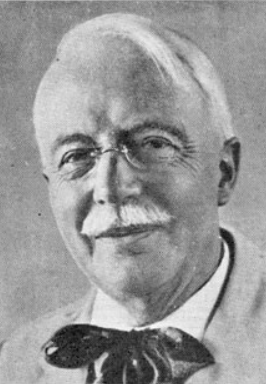James Cousins facts for kids
Quick facts for kids
James Henry Cousins
|
|
|---|---|
 |
|
| Born | 22 July 1873 18, Kevor Street in Belfast, Ireland |
| Died | 20 February 1956 (aged 82) Madanapalle, Andhra Pradesh, India |
| Pen name | Mac Oisín, Jayaram |
| Spouse | Margaret Elizabeth Cousins |
James Henry Cousins (born July 22, 1873 – died February 20, 1956) was a talented writer, poet, and teacher. He was born in Ireland but spent most of his life in India. He used different pen names, like Mac Oisín and the Indian name Jayaram.
Contents
Life Story of James Henry Cousins
Early Life and Education
James Henry Cousins was born in Belfast, Ireland, in 1873. His family were descendants of Huguenot refugees. He mostly taught himself by going to night schools. He worked as a clerk and later became a private secretary for the Lord Mayor of Belfast, Sir Daniel Dixon, 1st Baronet.
In 1897, he moved to Dublin. There, he joined a group of famous writers. This group included William Butler Yeats, George William Russell, and James Joyce. Some people believe he was the inspiration for a character in one of James Joyce's stories. Cousins was very interested in mysticism, which is about spiritual truths. He also studied the ideas of Madame Blavatsky, who founded a spiritual movement called Theosophy. He was also interested in the paranormal and helped with some experiments. Cousins also worked as a teacher in Dublin.
Literary Career and Move to India
While in Ireland, Cousins wrote several poetry books. He also acted in plays. He performed in the first show of "Cathleen Ní Houlihan" with the famous Maud Gonne. His plays were shown at the Abbey Theatre. One of his well-known plays was "the Racing Lug."
Cousins had a disagreement with W.B. Yeats about the Irish National Theatre. This led to a split, and many actors and writers supported Cousins. He also wrote a lot about Theosophy. In 1915, he traveled to India. His trip was paid for by Annie Besant, who was the head of the Theosophical Society.
He spent most of his life in India. For a year, he taught English Literature at Keio University in Tokyo, Japan. He also gave lectures in New York. In 1937, he officially became a follower of Hinduism. Cousins believed that Irish and Indian cultures had many similar ideas and feelings.
Connections in India
In India, James Cousins became friends with many important people. These included the famous poet Rabindranath Tagore and the Indian classical dancer Rukmini Devi Arundale. He also knew the painter Abdur Rahman Chughtai and Mahatma Gandhi. He gave important lectures in Madras in 1938 about "The Idea, Expression, and Fulfillment of Beauty." He also helped inspire the great Kannada poet Kuvempu.
Cousins wrote his life story with his wife, Margaret Elizabeth Cousins. She was a suffragette, meaning she fought for women's right to vote. She also helped start the Irish Women's Franchise League and the All India Women's Conference.
Interests and Beliefs
James Henry Cousins and his wife Margaret had many shared interests. They were both interested in anti-vivisection, which means being against animal testing. They also believed in theosophy, vegetarianism, and women's suffrage.
Vegetarianism
Cousins and his wife were strict vegetarians. In 1905, they started the Irish Vegetarian Society. James Cousins gave talks about why eating meat was not good. In 1907, he won an award for his lecture on "The Cruelties and Diseases Connected with Flesh-Eating."
Published Works
James Henry Cousins wrote many books of poetry and other works.
Poetry Collections
- The Legend of the Blemished King and Other Poems (1897)
- The Quest (1906)
- The Bell-Branch (1908)
- Etain the Beloved and Other Poems (1912)
- Sea-Change (1920)
- Above the Rainbow and Other Poems (1926)
- A Wandering Harp: Selected Poems (1932)
- A Bardic Pilgrimage (1934)
- Collected Poems (1940)
Other Writings
- The Wisdom of the West (1912)
- The Bases of Theosophy (1913)
- The Renaissance in India (1918)
- The King's Wife (1919)
- The Cultural Unity of Asia (1922)
- Work and Worship: Essays on Culture and Creative Art (1922)
- The New Japan: Impressions and Reflections (1923)
- Heathen Essays (1925)
- A Tibetan Banner (1926)
- The Faith Of The Artist (1941)
- The Work Promethean (1970)
See also
- List of Irish writers

